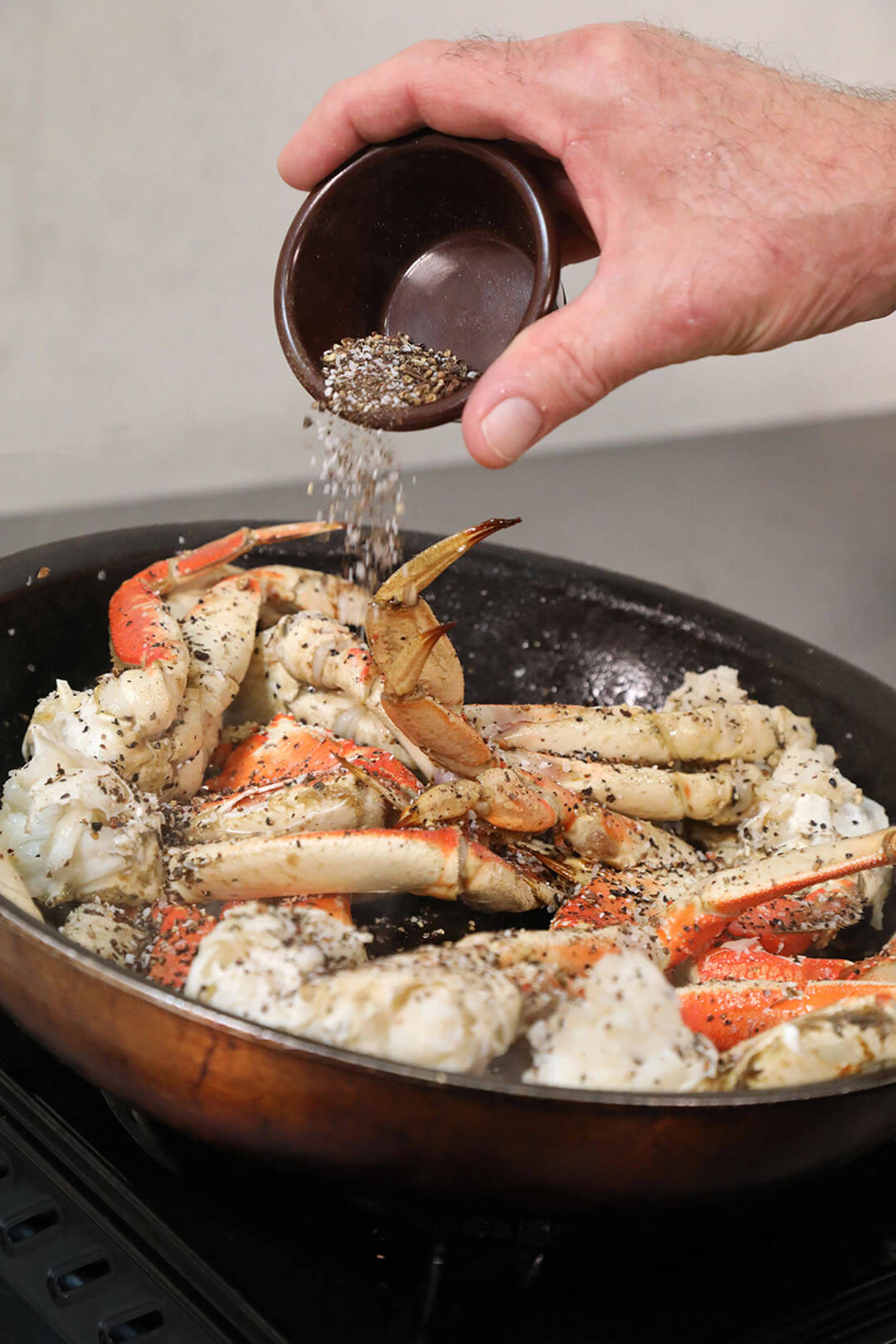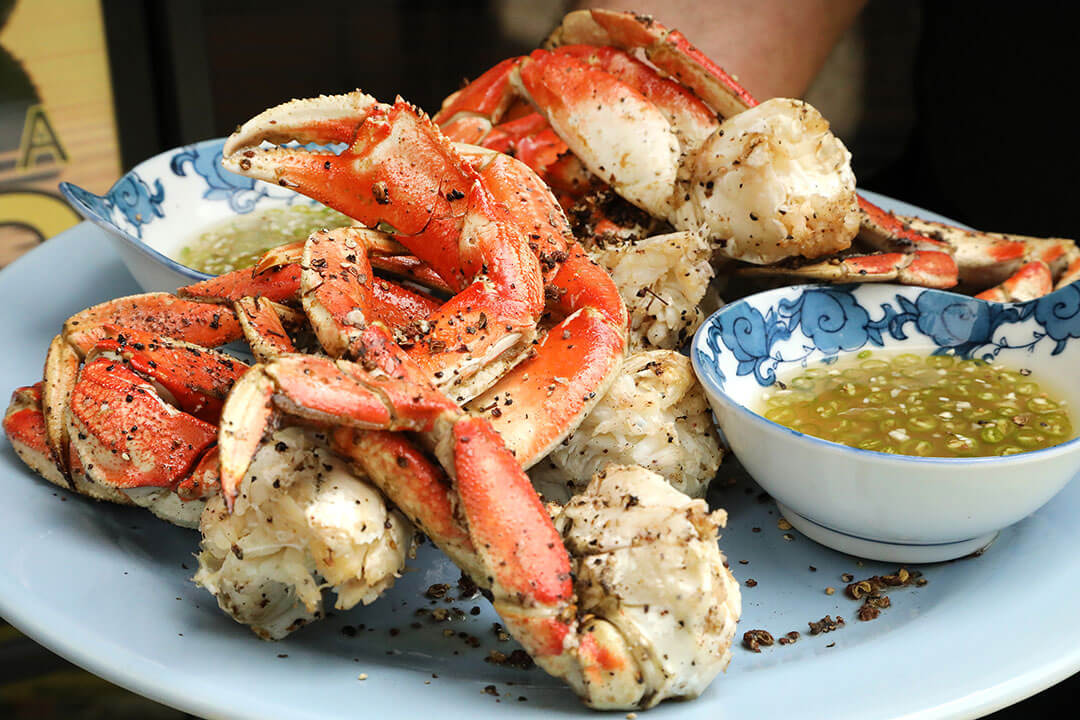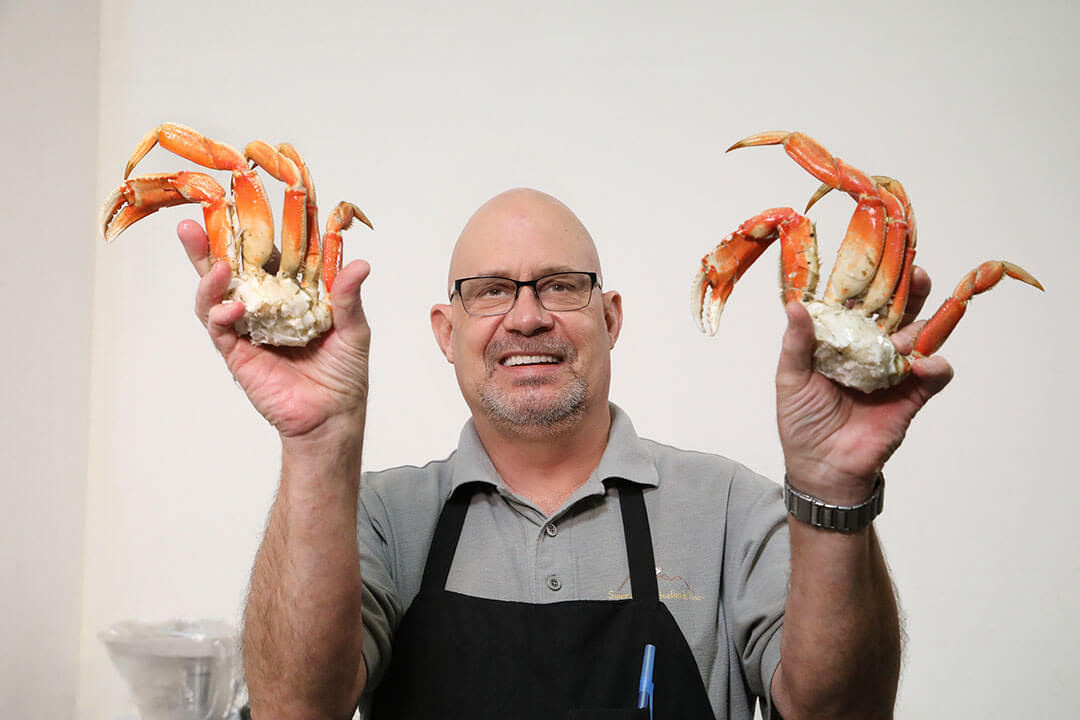Dungeness crab season kicks off from the Bay to Alaska.
From the Bay Area up the coast through Oregon, Washington, and Alaska, ’tis the season for tender, juicy Dungeness crabs.
Barring high levels of domoic acid, a naturally occurring toxin produced by certain types of algae and harmful in heavy concentrations, and large numbers of whales in the fishing grounds in danger of entanglement, commercial crabbers are expected out in the waters pulling in heaping crab pots starting in mid-November to early December.
After a delayed and shortened 2020-2021 season in the Bay Area due to holdups on wholesale price negotiations and whales — the fifth interrupted season in a row — crustacean enthusiasts have their fingers crossed for an abundant harvest.
“With things really not panning out last season with the whales moving through the area and not wanting to have the lines in there to foul up the whales, it would be nice if this was a bumper crop,” says Scott Lee, retail manager at Sierra Gold Seafood in Sparks. “It’s just really hard to predict.”
Sierra Gold Seafood sources Dungeness crab from the Bay Area all the way up to Alaska, depending on availability.
“We’re going to try to get the best price for the best product,” Lee says. “We’ll either bring them in live and sell them that way (or even cook them right here), or we’re bringing them in already cooked.”
The crabs are trucked in two to three times a week and can be off the fishing boat and into Sierra Gold’s retail market within a day or two.
“We’re only a couple of hundred miles from the coast, so it’s not insurmountable,” Lee notes.
A trained chef, Lee believes there’s no reason to get overly complicated with an ingredient as fresh and tasty as Dungeness crab.
“I love freshly steamed crab, pulled out of the shell and dipped in melted butter, maybe with a squeeze of lemon, some good buttered sourdough bread from the wharf, Caesar salad, a nice glass of white wine, and it’s a feast,” Lee says.
For crab cakes or already-cooked, in-shell crab, quickly roasting them with an array of chili spices and butter is an easy way to pack flavor punch. But don’t throw away the shells — just like that carcass from your roasted chicken, crab shells make a great stock when simmered with onions, carrots, celery, parsley, thyme, bay leaves, whole peppercorns, and ample salt.

When it comes to buying and preparing live crabs, YouTube is your best friend, Lee says. It’s the best way to get an up-close look at how to properly cook, clean, crack, and shell the crab (and to make sure you don’t miss out on that golden crab butter and white crab fat, which is excellent eaten by the spoonful or mixed into a dipping sauce for added flavor).
Or just go to Sierra Gold Seafood and ask away.
“Anybody who comes in or has any questions, we walk them through it. We give them suggestions. We have sauces. We have spices. It’s the full experience,” Lee adds.
Claire McArthur is Team Scott when it comes to a less-is-more approach to Dungeness crab. Pass the butter and sauvignon blanc, please.
Salt-and-Pepper Dungeness Crab
(courtesy of Scott Lee, retail manager, Sierra Gold Seafood in Sparks. Serves 2)

This crab dish is based on a signature recipe with Thai flair that hails from the Pacific Northwest. All these bold flavors will have you slurping crab meat from its shell and licking your fingers. This recipe has been slightly simplified to start with pre-cooked, cleaned, portioned crab. For big appetites, double the quantity of crab and spices, serving a whole crab per person.
1 teaspoon kosher salt
1 teaspoon freshly ground black pepper
1 teaspoon Szechuan pepper, lightly crushed
¼ cup peanut or vegetable oil
1 Dungeness crab (about 2 pounds), cooked, cleaned, and portioned with shells lightly cracked
Nam Pla Prik sauce (recipe provided)
In small dish, combine salt, black pepper, and Szechuan pepper, and stir to mix. Heat oil in wok or large, heavy skillet over medium-high heat until almost smoking. Carefully add crab pieces in their shells and stir fry until they are heated through, 2 to 3 minutes. Sprinkle the spice mixture over crab and continue stir frying until they are evenly coated in spices and give off a slightly toasty aroma, about 1 minute longer.
Transfer crab to warmed serving platter and pour Nam Pla Prik into individual bowls for dipping. Have a discard bowl available for shells, and provide plenty of napkins.
Tips: Szechuan pepper is not related to black pepper; it is the dried berry of the prickly ash tree. You’ll find it in specialty spice or Asian markets. Fish sauce is a pungent, salty liquid with an amber tone that is used in Southeast Asia and can be found in well-stocked grocery stores and Asian markets.
For Nam Pla Prik
¼ cup fish sauce
¼ cup freshly squeezed lime juice
6 Thai green chiles, chopped
1 clove garlic, minced
For this traditional Thai sauce, combine fish sauce, lime juice, chiles, and garlic in small bowl, stir to mix, and set aside. The sauce can be made a day or two in advance and refrigerated.


